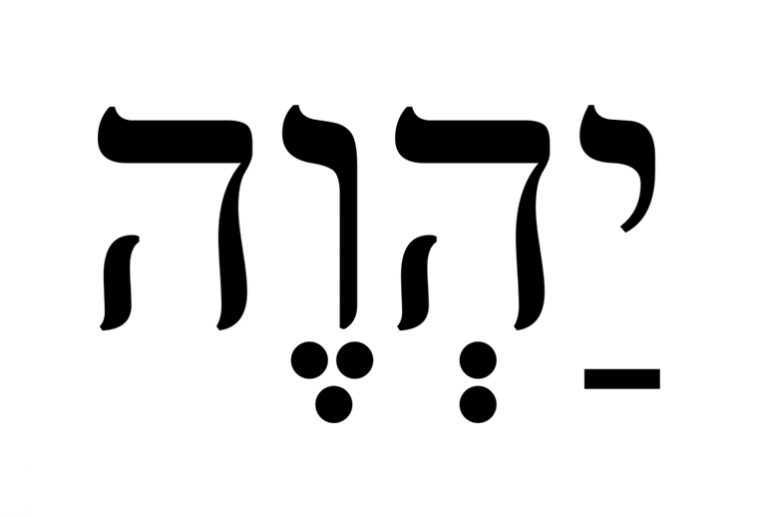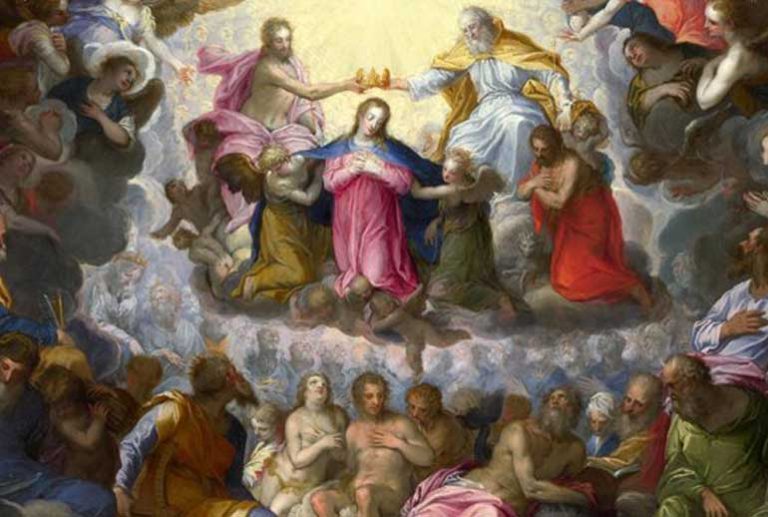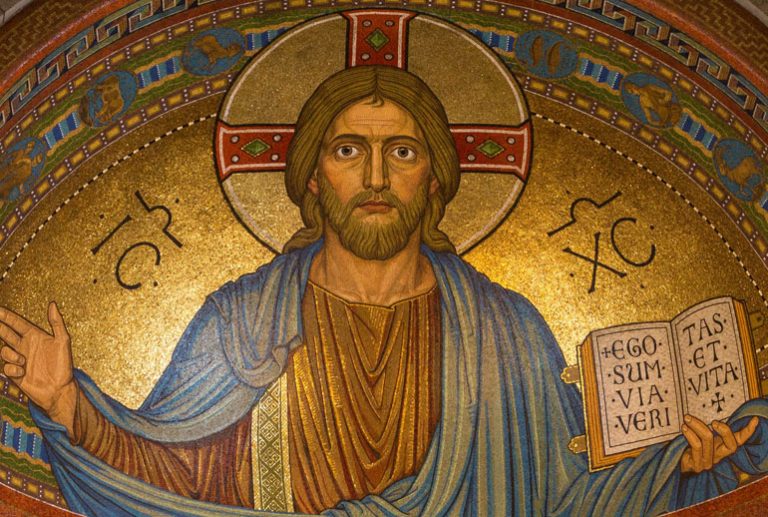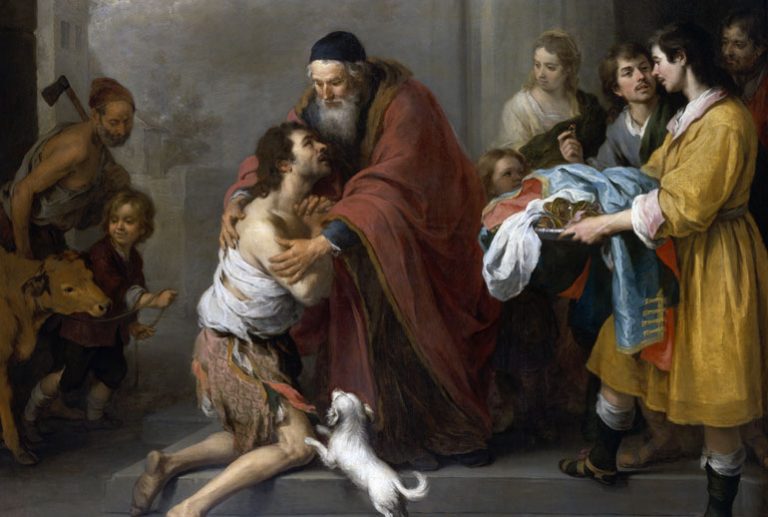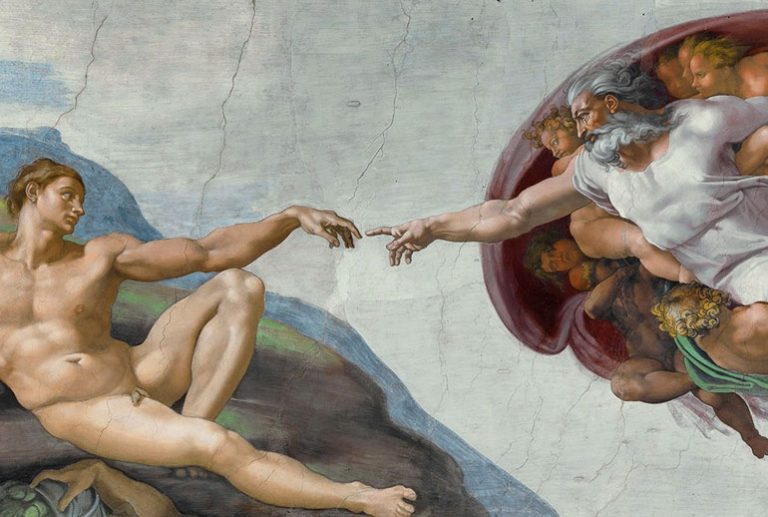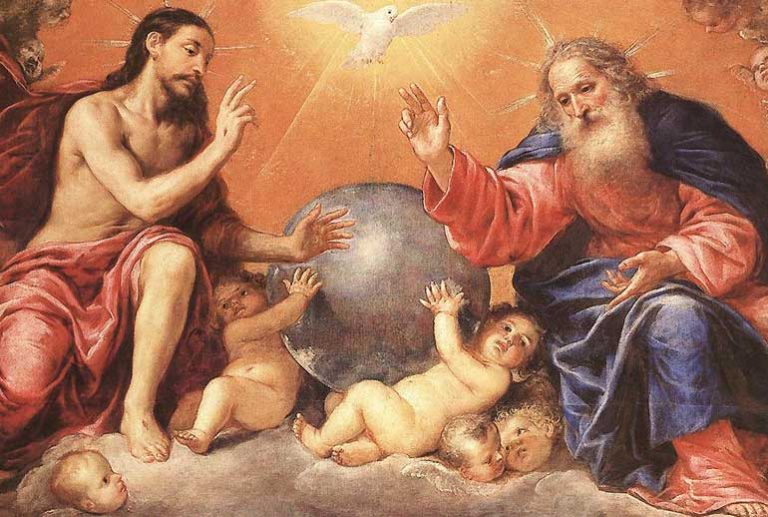One of the first prayers I learned in childhood was the Apostles’ Creed. A particular phrase always stood out to me: “[…] On the third day He rose from the dead, ascended into heaven, and is seated at the right hand of God the Father almighty […]”
Whenever I recited those words, I would picture a vivid scene in my mind: two majestic figures—Father and Son—each dressed in white tunics with golden sashes, standing on a massive cloud, surrounded by other smaller clouds and plump angels playing instruments that looked like miniature harps.
They were seated on golden thrones, adorned with precious stones, gazing down toward Earth. The scene was set in a space above—a brilliant blue expanse, high above the world.
I imagined the Father like a kind of Santa Claus figure: a bit overweight, with blue eyes, gray hair, a gentle smile, and white skin. In my imagination, His throne was larger and more imposing than that of the Son.
And the Son, seated at His right hand, looked—at least in my childhood imagination—like the English actor Robert Powell, who portrayed Jesus in Franco Zeffirelli’s[1] 1977 film Jesus of Nazareth. For some reason, even though Powell had brown hair in the film, I imagined Jesus with gray hair.
Already in my adulthood, through conversations with others, I have come to realize that many people share the same childhood image of God and His Son after the ascension to heaven. Just as the radio leaves it to our imagination to give a face and a body to the voice that emerges from the speaker, we tend to do the same with God. We want to see Him, to picture His face, to assign Him a form.
The Gospel of Matthew tells us: “And a voice from heaven said, ‘This is my beloved Son, with whom I am well pleased.’” (Matthew 3:17)
But it leaves the question open: What does God look like? What is His face and body like? Who is He?
In his novel The Shack, William Paul Young explores a deeply personal and spiritual encounter between a man grieving the death of his young daughter—murdered by a serial killer—and the Holy Trinity. One of the book’s most provocative elements is how the author represents each Person of the Trinity: The Father appears as an African American woman, The Holy Spirit as an Asian woman, and the Son as a Jewish man.
The story was adapted into a film in 2017, with Octavia Spencer[2] portraying the Father—affectionately called “Papa.” The creative portrayal stirred conversation but also illustrated how deeply rooted our desire to visualize God truly is. The question of what God looks like has captivated the human imagination for as long as we have historical memory.
It is the same kind of curiosity we have when getting to know any person of significance.
For instance, if someone were to ask, “Who was Gabriel García Márquez?” we might answer: He was a Colombian writer, winner of the Nobel Prize in Literature (1982), author of iconic novels such as One Hundred Years of Solitude, Chronicle of a Death Foretold, and In Evil Hour. He also wrote short stories like The Incredible and Sad Tale of Innocent Eréndira and Her Heartless Grandmother and Big Mama’s Funeral, among others. He lived to be 87 years old, and passed away in Mexico City, where he had spent his final years, after battling lymphatic cancer.
If the question is, “What was he like?”
We could describe him as a brilliant and humorous man, someone who brought laughter to his friends, a tireless seeker of peace, and although openly socialist, someone who kept his distance from political entanglements. He remained faithful to his ideals and regarded friendship as one of life’s most precious gifts—something to be cherished and defended at all costs.
As for his physical appearance, we might say he had curly hair, a round face, high cheekbones, bushy eyebrows, and a full mustache that highlighted his perpetual smile. He had a broad, high forehead, a hooked nose, and light skin that contrasted with his dark eyes.
These are the kinds of questions we naturally ask when we want to truly know someone: What is their name? Where are they from? What do they look like? What are they like? What did they accomplish? What legacy did they leave behind?
So, it is only natural that we would want to ask the same things about God.
[1]Gian Franco Corsi Zeffirelli was an Italian film director, producer, and designer renowned for his extensive body of acclaimed films, operas, and theatrical productions.
[2]Octavia Spencer (born May 25, 1970, in Montgomery, Alabama) is an American film and television actress, director, producer, and screenwriter. She has received numerous accolades, including an Academy Award, a Golden Globe, a bafta, and three Screen Actors Guild Awards.


